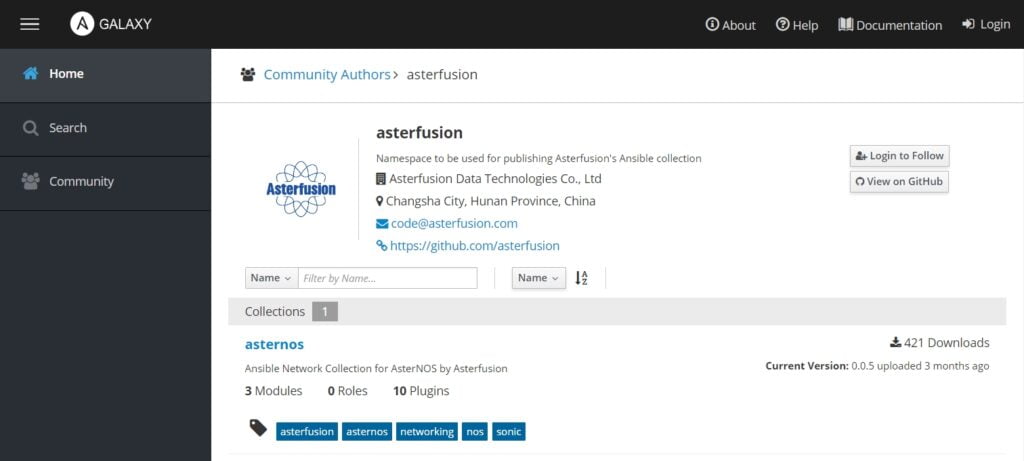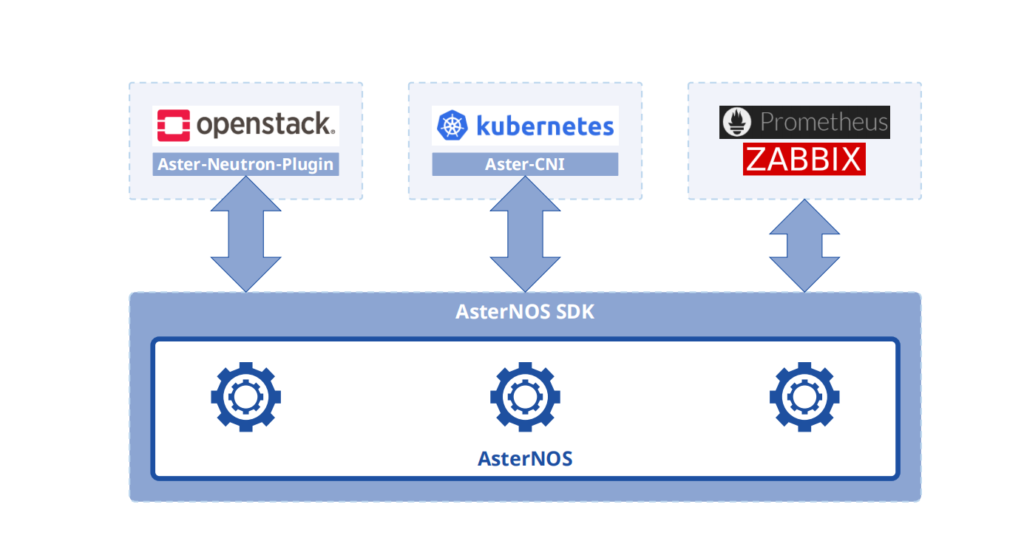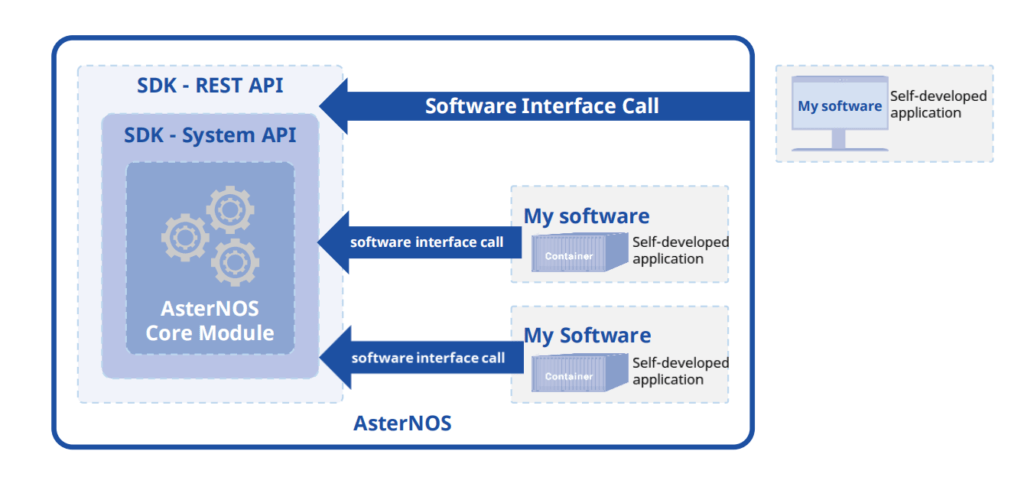Asterfusion Provides Official Ansible Plugin for Its Enterprise SONiC NOS
written by Asterfuison
In order to better embrace NetDevOps, Asterfusion will provide its SONiC based AsterNOS with network plug-ins and modules for integrating with the Ansible platform. These modules can be called directly in the “Playbook”, eliminating the need for tedious customized development. O&M engineers can ignore the underlying configuration scripts/software interfaces and focus more on the network business itself, thus greatly improving O&M efficiency.
Background
With the fast development of virtualization technology and cloud computing, the network has gone through important changes from technology, architecture to operations and maintenance, which is easily seen through the increased complexity of operations and maintenance, the refinement of O&M management, and operations and maintenance’s responsiveness to agility. The combination of these three factors has making network engineers face a mountain of O&M requirements while technology is constantly evolving. Thus, it has become a major issue for many network operations and maintenance teams to come up with a way to deal with the new challenges. Under such a context, in 2014, the NetDevOps trend blew in the network engineering circle, from individuals to organizations, everybody shared how to use Python development and open-source automation tools to enhance and improve network operation and maintenance efficiency from the bottom up .

What Is NetDevOps
Overall, NetDevOps is an effective process and methodology for network operations and maintenance personnel to upgrade the level of automation in operations and maintenance by leveraging open-source technologies, tools, and even commercial solutions for their own operations and maintenance scenarios, thus boosting the efficiency of daily management, operations and maintenance.

What is Ansible
Ansible is an open-source network automation platform that is based on Python development. It combines the best aspects of many operation and maintenance tools (Puppet, CFEngine, Chef, Func, Fabric, SaltStack) to enable tasks like system configuration, program deployment, and batch operation commands to be automated. It significantly reduces the workload for administrators, while improving work efficiency. However, when deploying, if the device’s software version doesn’t come with ready-made Ansible plugins or modules, further development is required. Successful integration of the equipment ultimately depends on the research and development capabilities of the operational and maintenance personnel.

What is AsterNOS?
AsterNOS is an enterprise-level SONiC distribution self-develop by Asterfusion, which is stable and compatible with almost all mainstream commercial switching chips, with tens of thousands of commercial deployments around the globe. Compared to the community version, the commercial SONiC-based AsterNOS provides a wider variety of features, simpler usability, and can be used right away. As a new-generation NOS for the cloud computing era, AsterNOS is open source and business-oriented, and absolutely conforms to the NetDevOps concept, making it more useful and engaging.
Embrace NetDevOps, Asterfusion provides an official Ansible plugin for AsterNOS
We are delighted to announce the launch of our official AsterNOS Collection. The development and adaptation of the cliconf plug-in and asternos_command module have been completed (A demo is provided in the appendix). We will continue to provide development updates for it.
For more information, please visit the Ansible Galaxy homepage of Asterfusion. Welcome all operation and maintenance engineers to download and communicate with us in depth!
Project home page address:
https://galaxy.ansible.com/asterfusion

It is worth noting that AsterNOS offers a comprehensive set of open network development environment for NetDevOps requirements, providing powerful SDK capabilities: a rich software programming interface, open container environment and various basic network functions packaged as services. All of this enables open network users to efficiently operate and maintain their networks and develop their own network applications.


Appendix: Command Line Module DEMO
You can install Asterfusion AsterNOS collection using Ansible Galaxy CLI
| ansible-galaxy collection install asterfusion.asternos |
You can also include it in a requirements.yml file and install it using: ansible-galaxy collection install -r requirements.yml
| — collections: – name: asterfusion.asternos |
Dependencies for Ansible Asterfusion AsterNOS ensemble:
| pip install paramiko>=2.7 pip install jinja2>=2.8 |
In the demo below, we use the asternos_command module to execute some command lines on a switch running AsterNOS.
| (ansible) code@asterfusion test % cat asternos_command.yaml — – name: “Test AsterNOS CLI” hosts: datacenter gather_facts: yes connection: network_cli collections: – asterfusion.asternos tasks: – name: “Test asternos_command module: show command with retry” asternos_command: commands: – show interface summary retries: 3 interval: 3 register: cmd_op – name: Print vars debug: msg: “{{cmd_op.stdout_lines}}” – name: “Test asternos_command module: show command with wait_for” asternos_command: commands: – show version wait_for: – result[0] contains AsterNOS register: cmd_op – name: “Test asternos_command module: write command with prompt handling” asternos_command: commands: – command: ‘write’ prompt: ‘\[y/N\]: $’ answer: ‘y’ |
For more: please visit: bd@cloudswit.ch



